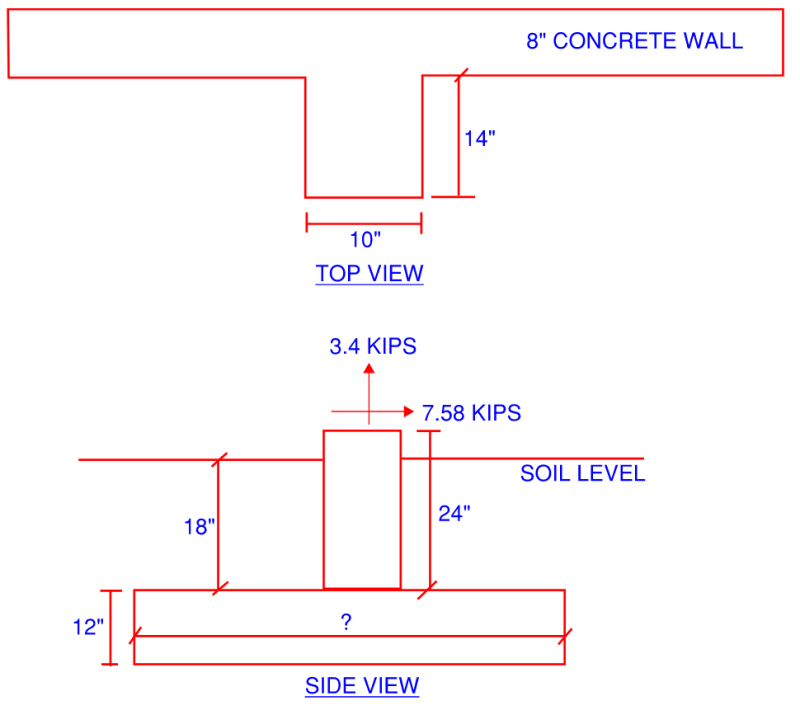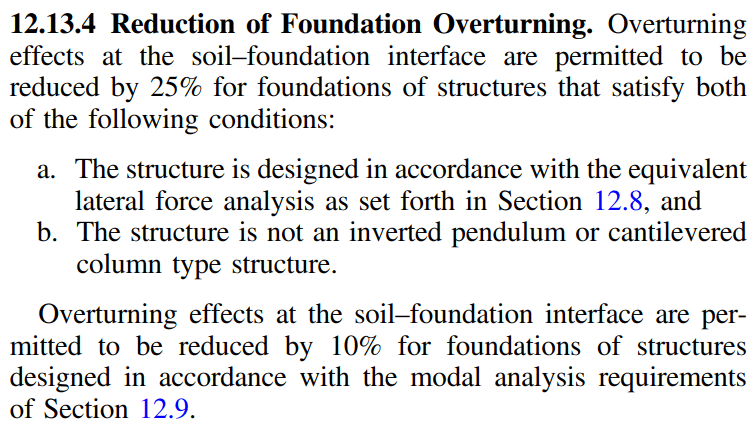YoungGunner
Structural
- Sep 8, 2020
- 98
Got the following situation for a metal building foundation pier and I'm struggling with the idea of having uplift when solving for soil bearing pressure. The forces shown are ASD and are from a seismic load combo. As you see, there is net uplift and a lateral bracing force at the top of the column. The uplift absolutely wrecks the eccentricity of the M/P unless footing size is increased significantly to add weight above to counteract the uplift. This is a relatively tiny building (30'x48') and so far a 48"x48" wide spread footing has been sufficient for every other load condition, but for this one load case I would have to increase the footing to around 70"x70". This large a footing would be ridiculous to any builder for this size of metal building and I'm worried other engineers know tricks I'm unaware of.
Looking for some tips and tricks on how to reduce the eccentricity other than merely increasing the overburden weight, or if there is any justification for not checking bearing pressure for a load combination that has net uplift. Is there anything to be said for we can't have bearing pressure pushing down if I'm just trying to keep the footing from lifting up?

Looking for some tips and tricks on how to reduce the eccentricity other than merely increasing the overburden weight, or if there is any justification for not checking bearing pressure for a load combination that has net uplift. Is there anything to be said for we can't have bearing pressure pushing down if I'm just trying to keep the footing from lifting up?


